The Romance of the University of California, Berkeley - A historic view of the university in 1928
26th Feb 2022
The Romance of the University of California, Berkeley, published in 1928 by the Alumni Association of Cal Berkeley and edited by Robert Sibley, sixty years after the school was founded, is a gem of a book. It combines historic and interesting images about the top ranked school with frothy prose.
"Long before Cabrillo came, before the Padres began their weary trek, before the days of the Gold Rush, California was an enchanted name. There has always been about California and her history something that has stirred the imagination of men. But in all of her story no chapter has been more filled with romance than that which deals with the founding of her State university, the University of California. It is a story filled with the hopes and ambitions of men and women who sacrificed much, and work incessantly, not for their own personal advancement but for the fulfillment of an ideal."
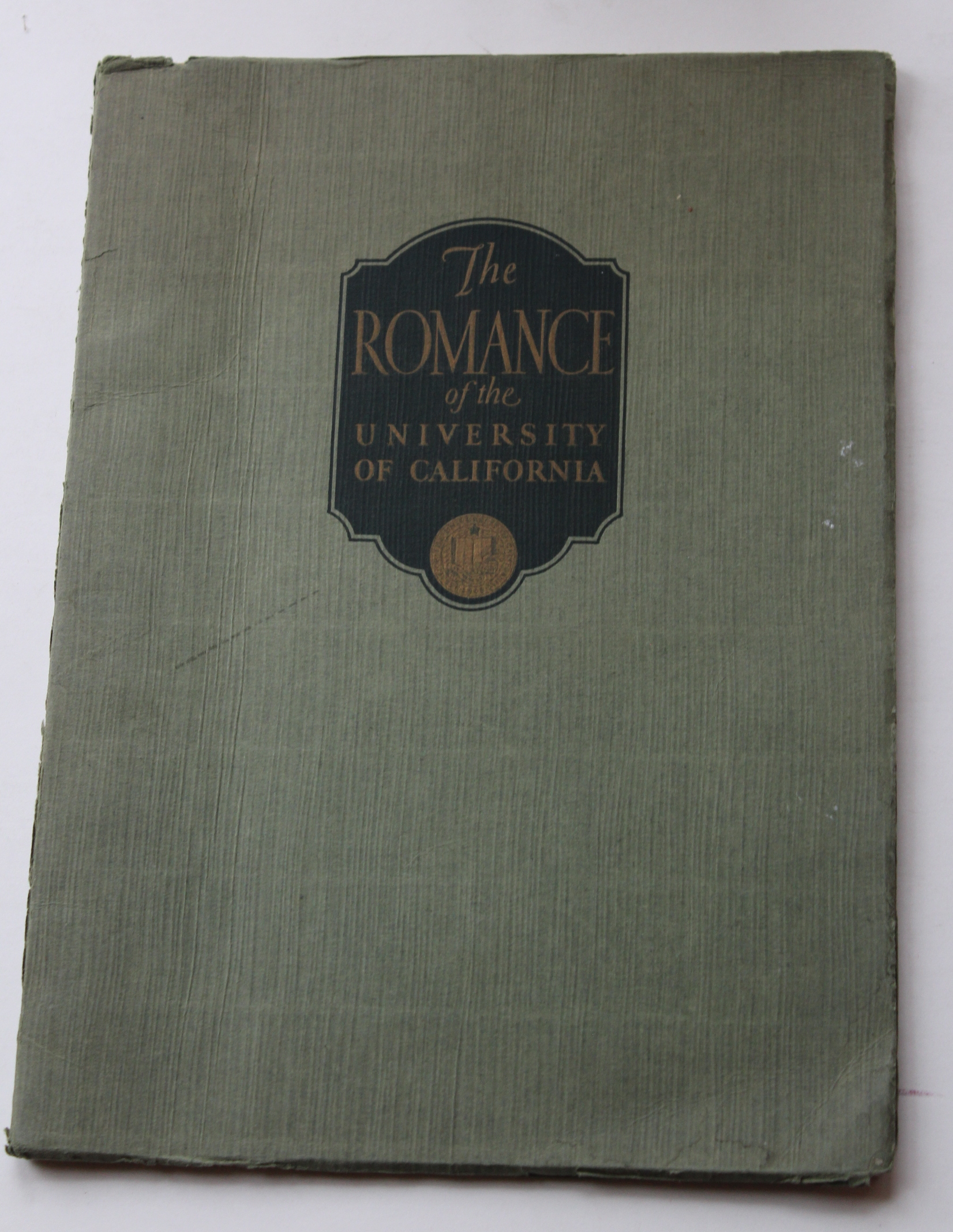
The book sheds light on the choice of the name Berkeley for the school. It was suggested by Billings, Esq., a member of the board of the College of California when establishing the school. It was named for George Berkeley, known as Bishop Berkeley, an Irish-Anglo philosopher who died in the eighteenth century. Bishop Berkeley once wrote, "Westward the course of empire takes its way."
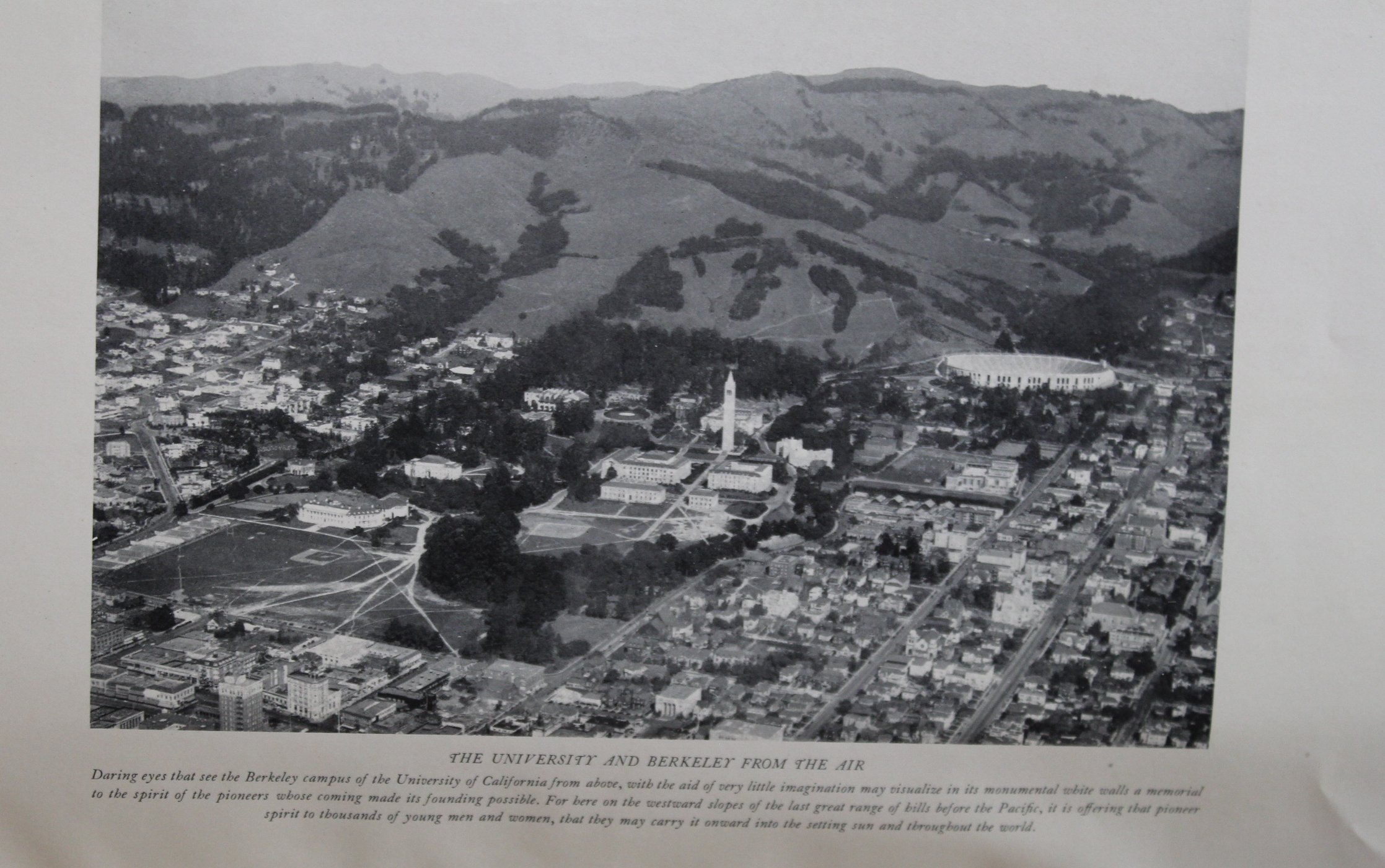
An aerial view of the cal Berkeley campus and the city of Berkeley in 1928
The choice of the site in Berkeley for the College of California had been the result of a long search up and down the coast and into the Napa and Sonoma valleys. The book explains why Cal has such a fierce rivalry with Stanford. "From 1890 to 1900, although there was a very general expansion of the University along all lines, a substantial increase in the number of its students, and in the work it offered, more liberal aid from the Legislature, and a more friendly attitude throughout the State, the most interesting development was the change in student body spirit. In truth up to this time there had been no unified student body. Before the founding of Stanford University there had been no stimulus to college spirit. All literary and athletic contests had been interclass or intersociety, tending to divide rather than unite the students. There had been no common cause for which all might work. With the coming of Stanford there was a newly aroused interest in higher education; the number of students showed a material increase, and there grew up a healthful competition that was, and has continued to be through the years, of benefit to both institutions."
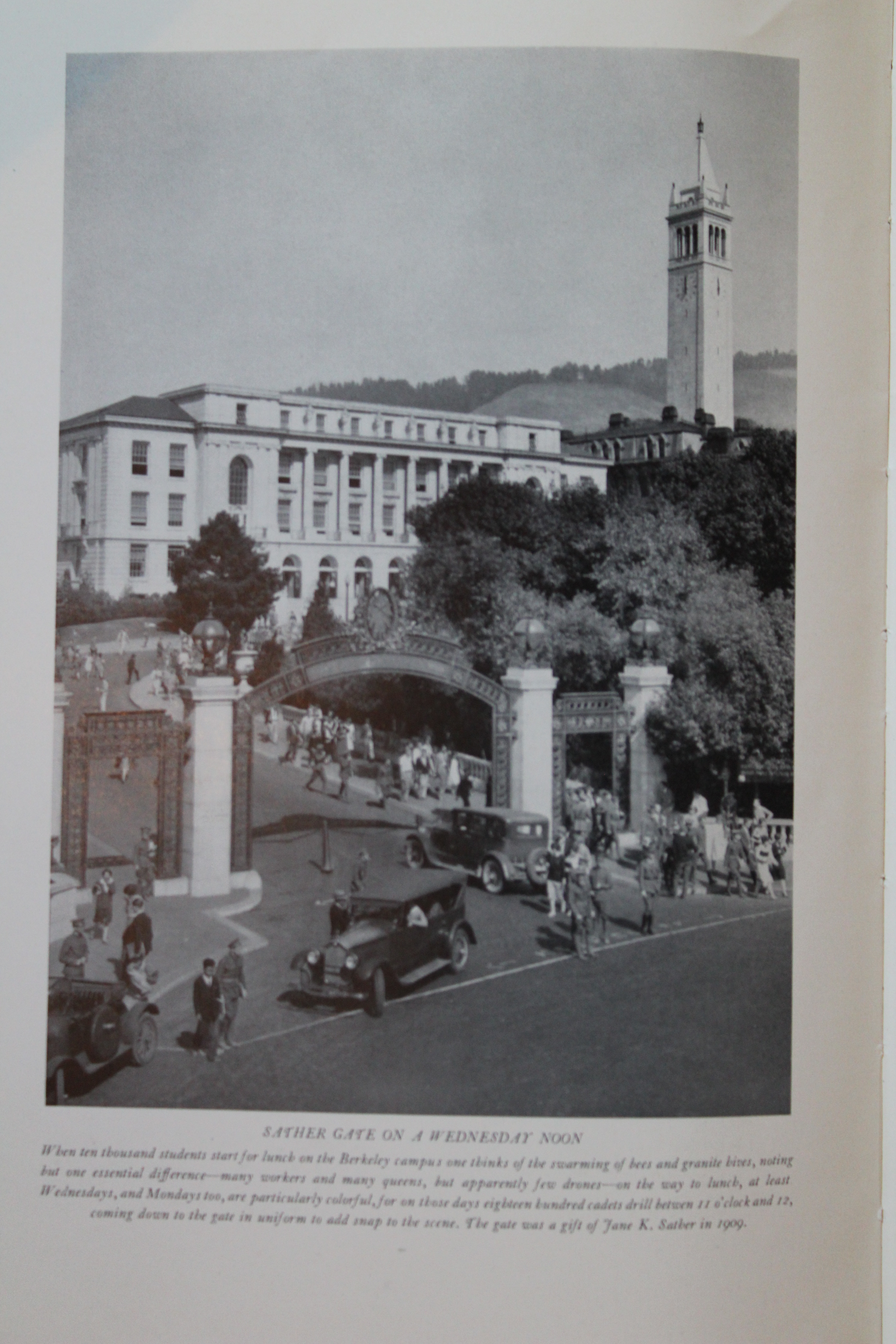
A late 1920s view of the Sather Gate and the Campanile
The book shines with its early images from the 1927-1928 period, showing the campus in all its glory.
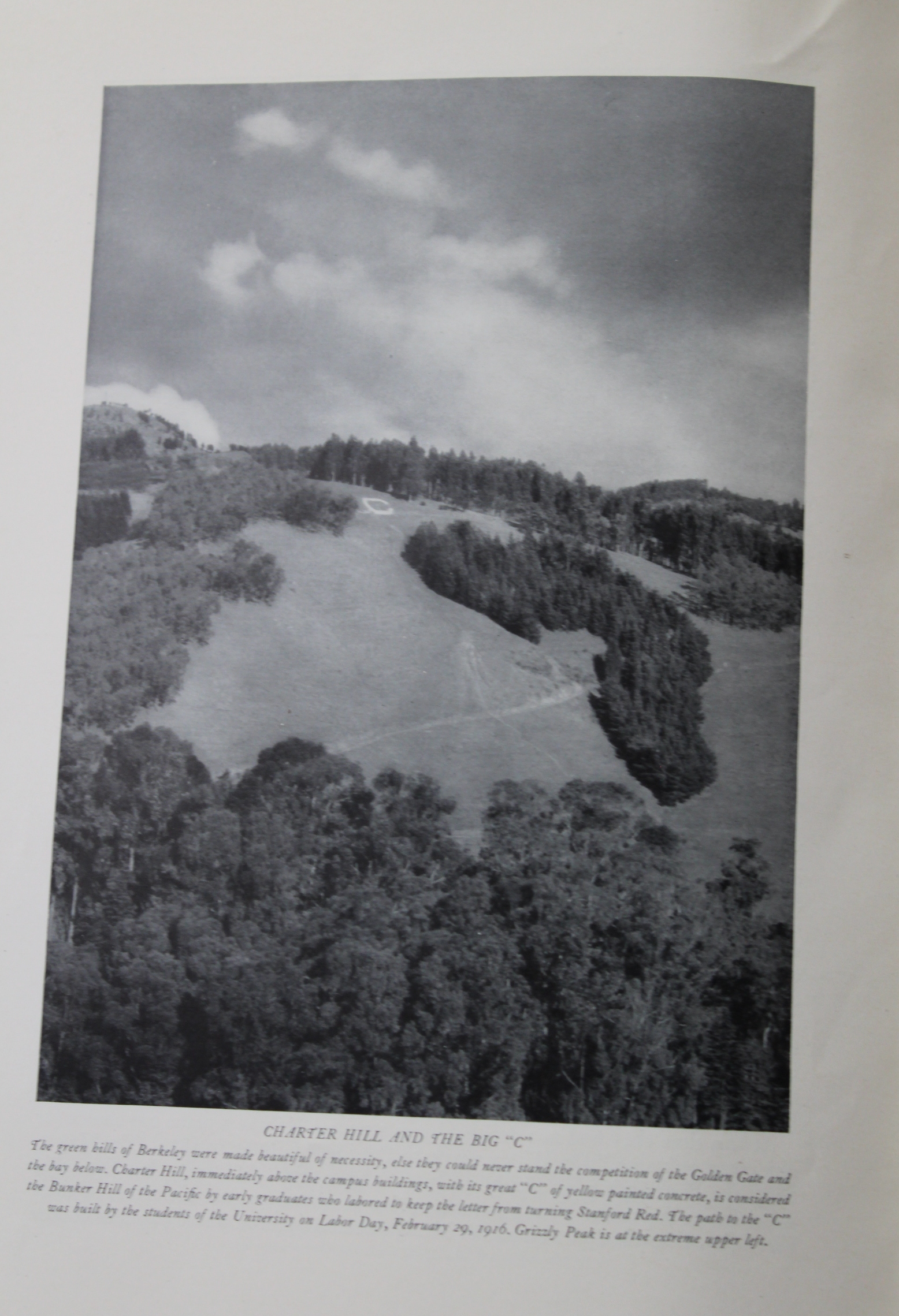
A 1928 view of Charter Hill and the Big "C"
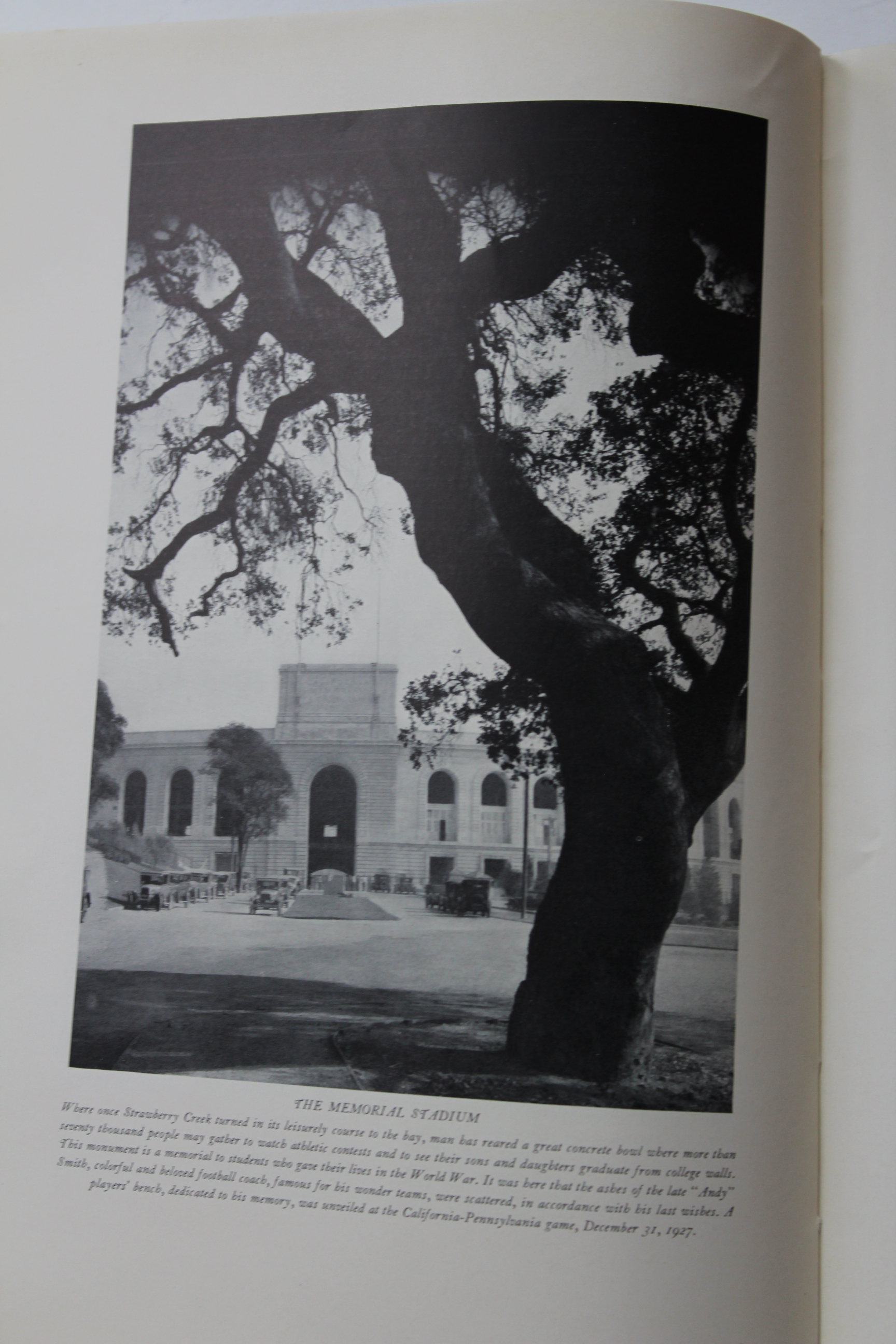
Memorial Stadium with late 1920s automobiles parked in front
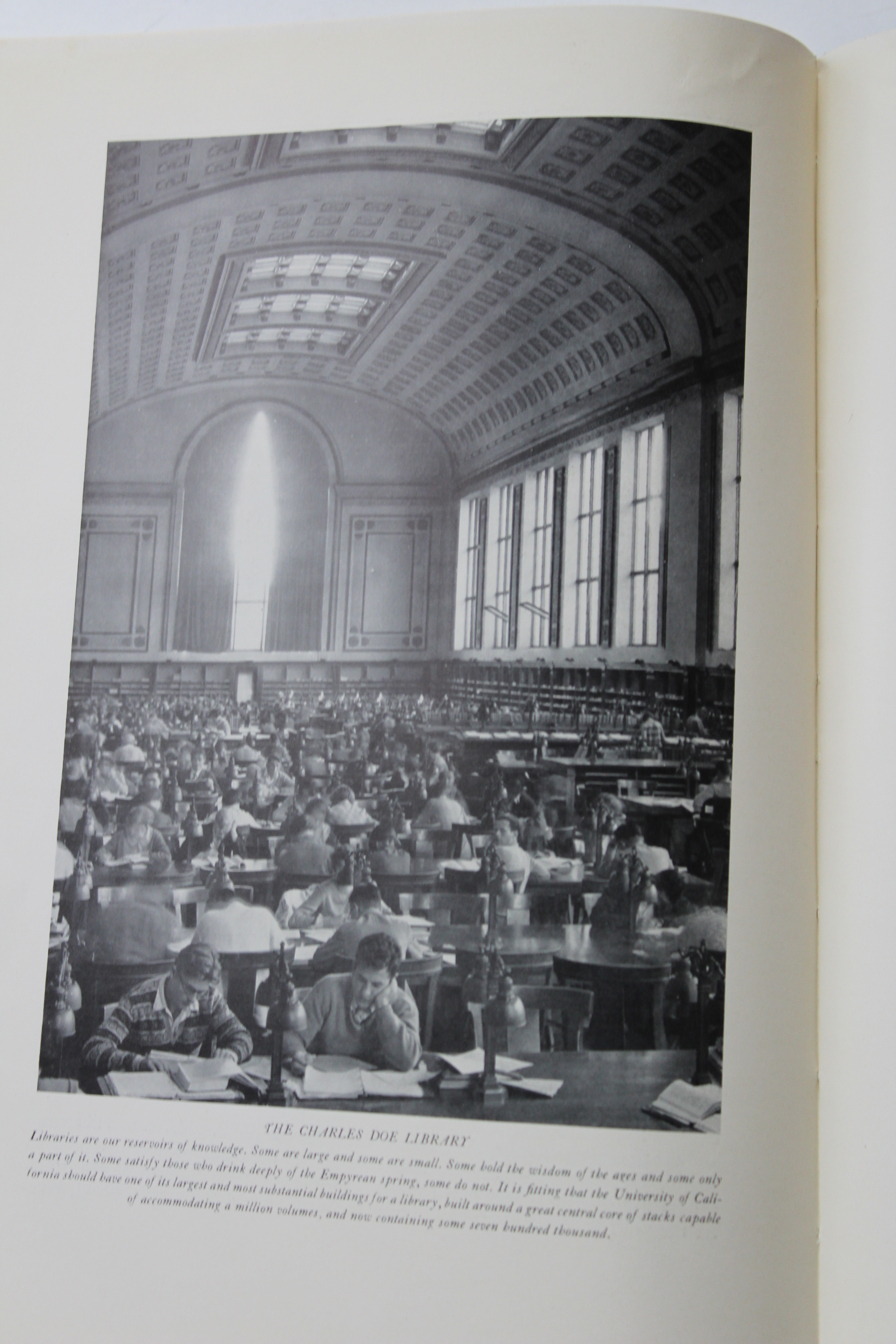
A packed Charles Doe Library at Cal Berkeley, with nearly every seat taken by well dressed students
Cal Berkeley has always been more progressive than the elite East Coast schools, who didn't admit women until the 1960s and 1970s.
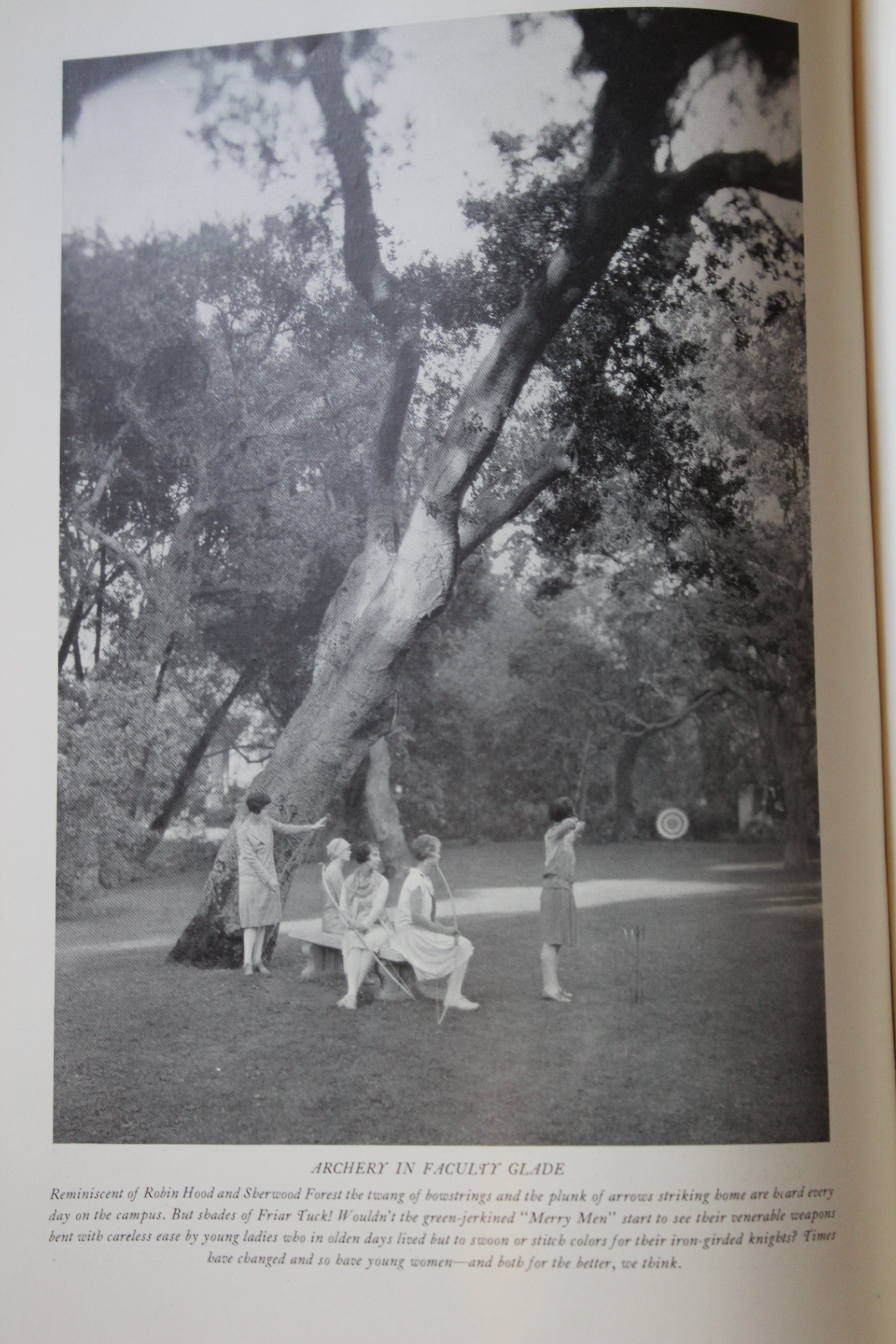
Our favorite picture in the book is this angelic one of female students practicing archery. The caption reads, "Reminiscent of Robin Hood and Sherwood Forest the twang of bowstrings and plunk of arrows striking home are heard every day on the campus. But shades of Friar Tuck! Wouldn't the green-jerkined Merry Men start to see their venerable weapons bent with such careless ease by young ladies who in olden days lived but to swoon or stitch colors for their iron-girded knights? Times have changes and so have young women--and both for the better, we think."
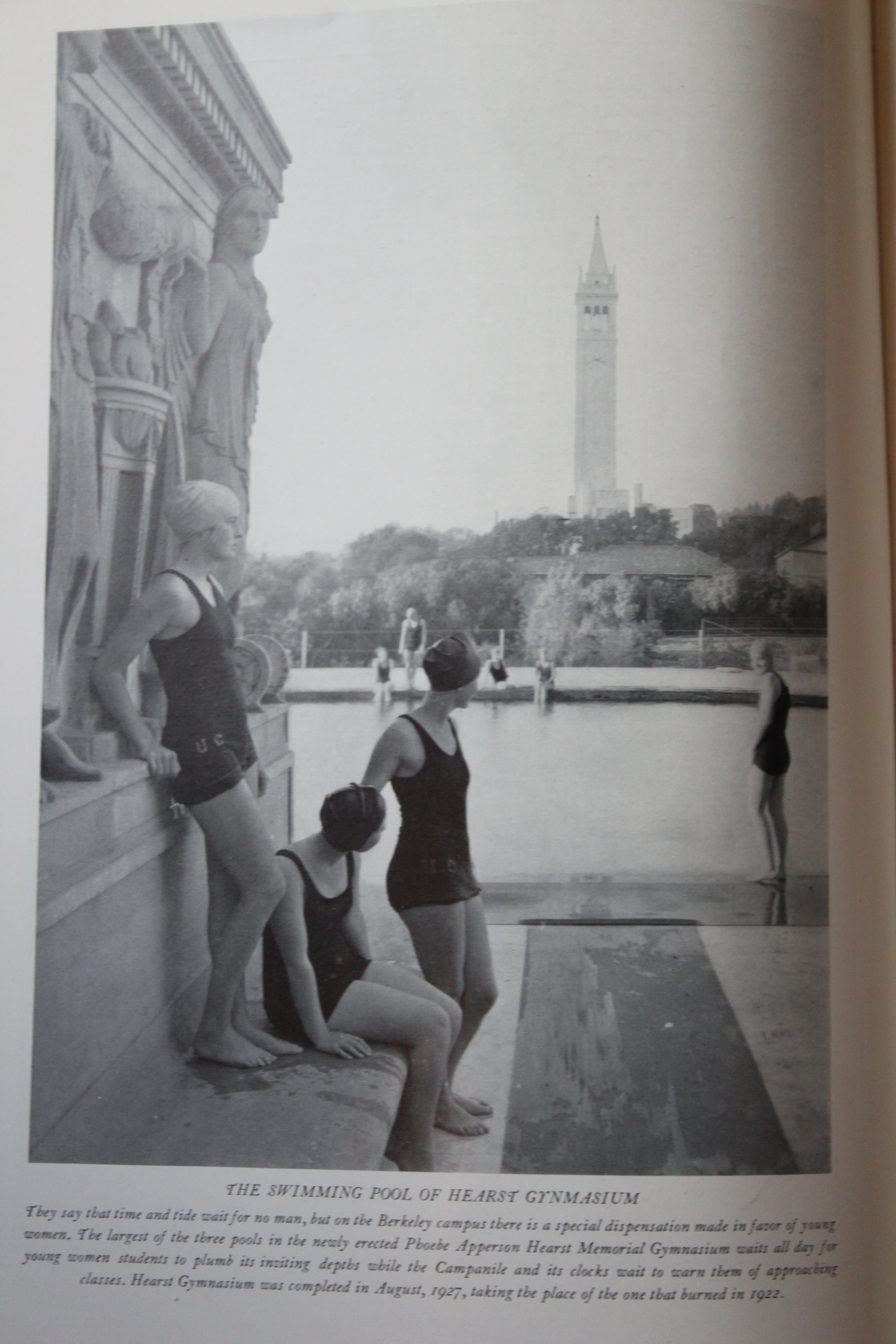
Another favorite is this shot of students swimming in the pool of Hearst Gymnasium. "They say that time and tide wait for no man, but on the Berkeley campus there is a special dispensation made in favor of young women. The largest of the three pools in the newly erected Phoebe Apperion Hearst Memorial Gymnasium waits all day for the young women students to plumb its inviting depths while the Campanile and its clocks wait to warn them of approaching classes."
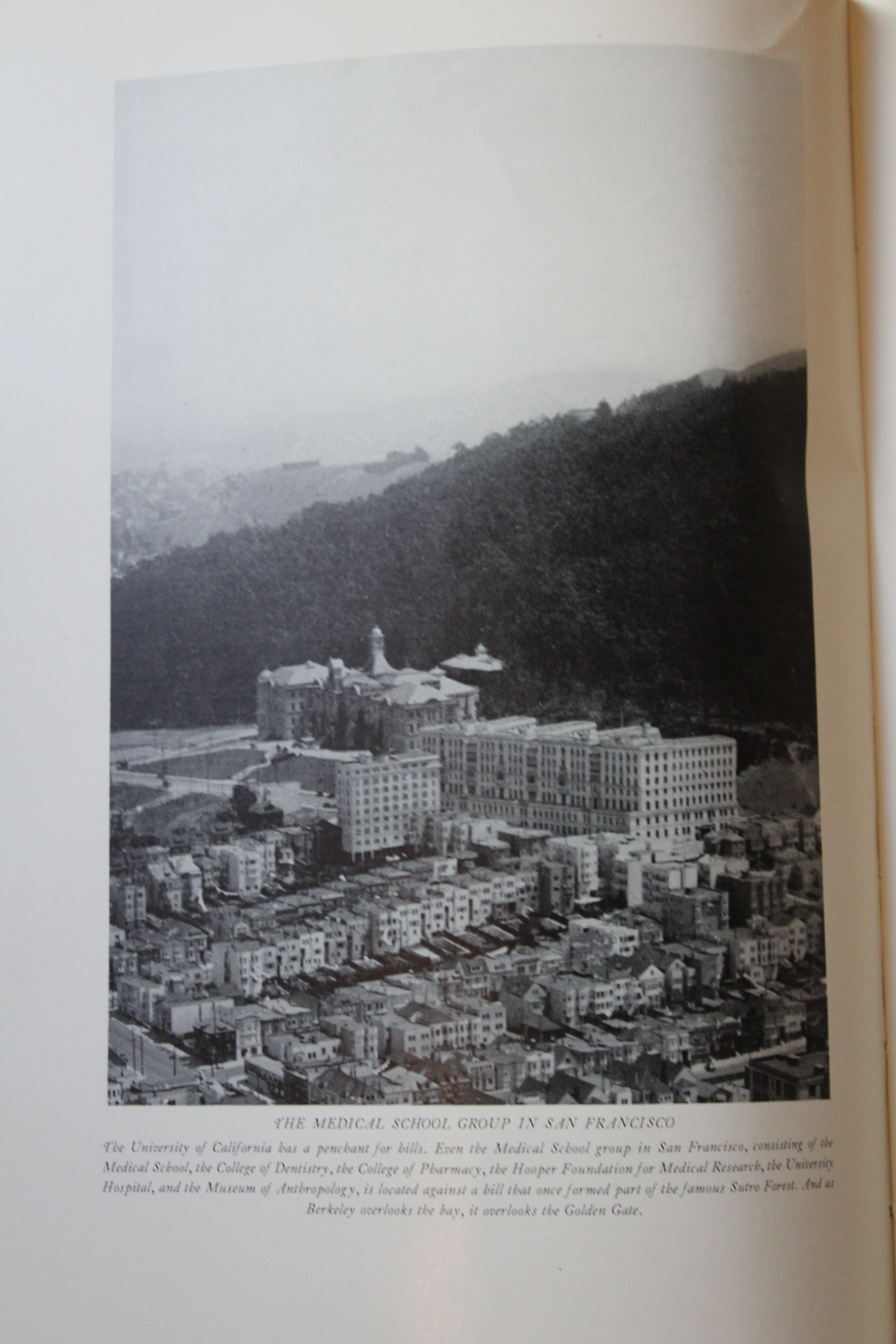
This classic shot shows the "Medical School Group in San Francisco." Most of this complex of buildings, which at one time housed the medical school of the University of California, was demolished in 1967. According to the UCSF website, "In 1872, as the structure of the divisions of the University was still under development and buildings were still under construction in Berkeley, a “medical department” was established under the control of physicians in San Francisco." Meaning that before the University of California, San Francisco was formally recognized as a separate campus, it technically was under the auspices of U.C. Berkeley.
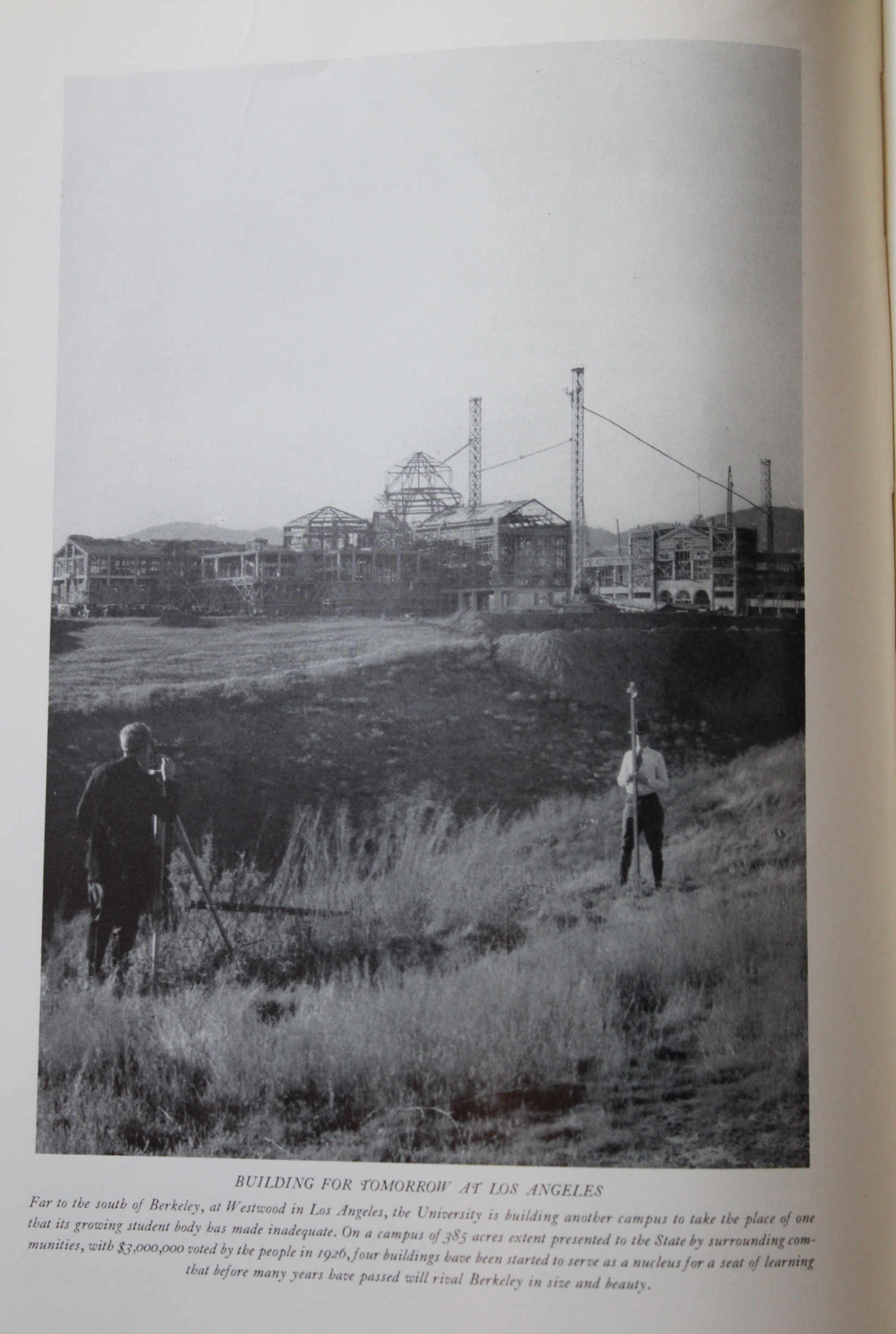
This picture is described as "Building for Tomorrow in Los Angeles," and describes the formation of the UCLA campus in Westwood as, "fours building have been started to serve as a nucleus for a seat of learning that before many years have passed will rival Berkeley in size and beauty." It is unclear whether the buildings in the background are derelict buildings to be torn down or the frames and early scaffolding of new campus buildings. Given the derrick, the skeleton of a dome, and the arches on the right, we think they are likely the new buildings under construction.
The book is an interesting look back on a time of romance, "Almost every year remarkable changes are made upon the campus. The charm of the University, its romantic appeal, the pictures which live in the minds and hearts of the alumni, are due in no small measure to the beauty of its surroundings. A rough wooden bridge and a rude path; a group of eucalyptus trees silhouetted as delicately as the details of a landscape by Watteau; low spreading live oaks, reminiscent of those quiet, wistful days before the Gringo came; rolling lawns, flecked with sun and shadow; hills rising to the east, the sun blazing down into the Pacific--and in the center of all this beauty rises the Campanile."